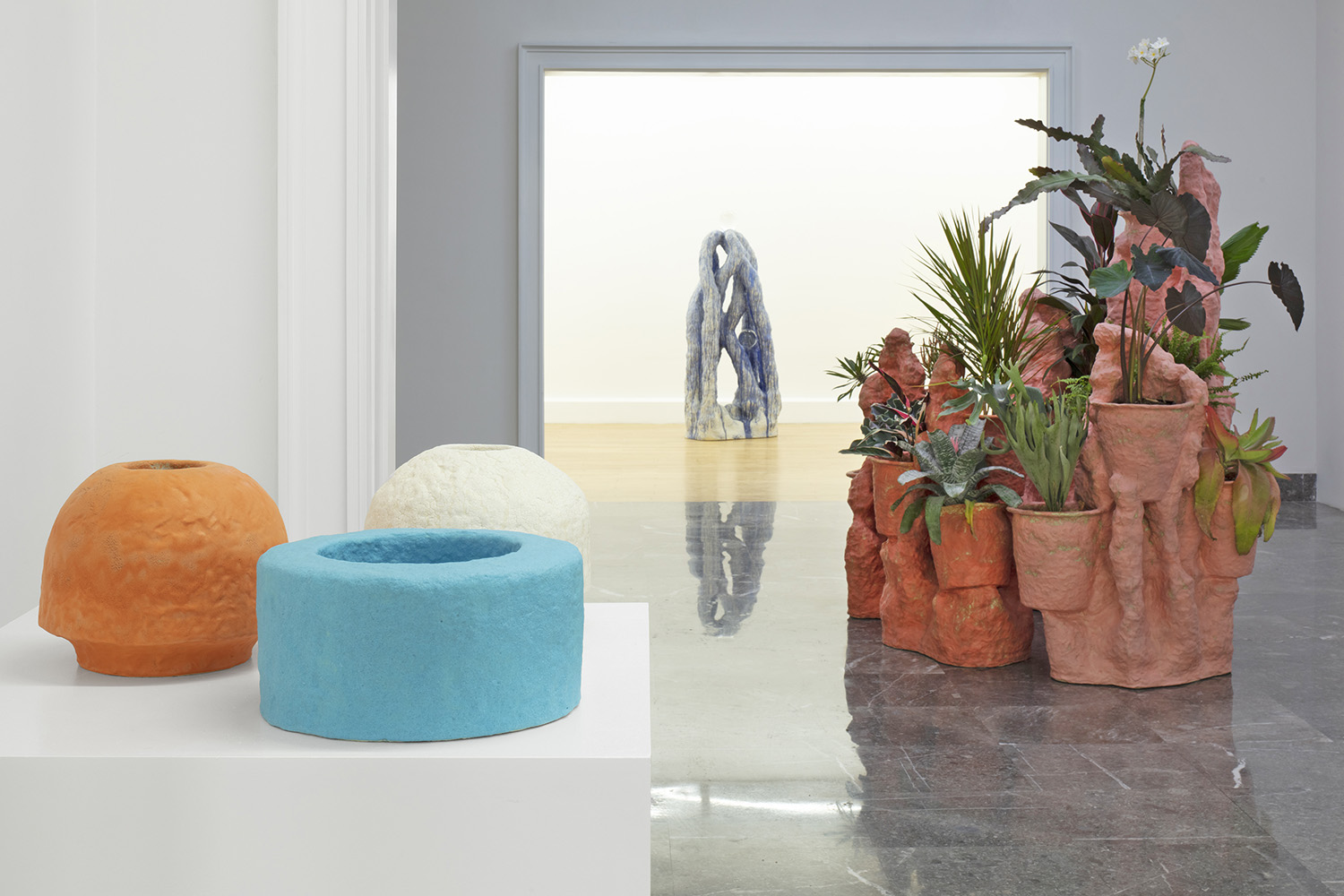
Installation view
This is the Living Vessel: Body, 2022
Photograph by WhiteBalanceMX
Anders Ruhwald This is the Living Vessel: Body
Morán Morán is pleased to present Anders Herwald Ruhwald’s first solo exhibition in Mexico City and his second with the gallery, titled This is the Living Vessel: Body. Ruhwald’s work is primarily based in ceramics, a medium he engages as both a methodology and a historical framework to process his ideas. His works traverse sculpture and utility indiscriminately, often in a contradictory and paradoxical way. The title of the show is a quote taken from The Black Mountain School poet and potter M.C. Richards’ countercultural classic, Centering, from 1964. In this book, Richards explores the poetry of humanity through the metaphor of centering – a core aspect of making pottery. Likewise, Ruhwald sees the act of making as a way of being, a way to make sense of the world.
Centrally placed in the gallery is a grouping of five works, titled Object for Three Plants (Petitot’s Dream #6-10). These amorphous red and pink forms have three protrusions that serve as vessels for plants to grow. Ruhwald considers these “living sculptures” because the foliage becomes as integral to the work as the ceramic structure itself. Evolving with time, these sculptures continually change as the plants gradually cover sections of the surface. Ruhwald relates these objects to the Danish artist Axel Salto’s (1889-1961) ceramic works which often referenced growth cycles and plant life. Through the introduction of living plants, Ruhwald takes Salto’s idea a step further, obscuring the traditional dialectical relationship between art and life, or nature and culture. With these plant works, Ruhwald seeks a variation of kinetic sculpture; one that is not mechanical but is aligned with the cycle of life as the sculpture becomes participatory through the growing and grooming of the plants.
An adjacent space contains three large sculptures and a wall work. One imposing piece, titled Yesterday’s Dream (The Future), presents an arch of intersecting arms that rise and eventually join, carrying two crystal balls. The arms are covered by a dripping, pooling blue glaze that seems to run off the piece. These two counteracting movements of rising and flowing, relay the process of becoming and decaying, simultaneously. The two glass spheres hold the entirety of the room reflected, yet turned upside down, so that the piece becomes a kaleidoscopic experience where gravity is both materialized and annulled.
Two large-scale and pale skeletal works (Holder #4 and #5) present another sort of vessel, but this time to hold candles. Ruhwald is interested in the candle’s twin properties of illumination and combustion, something he considers an everyday kind of sacrality. Flux Field (Aluminum, Barium, Calcium, Cadmium, Lithium, Natrium, Potassium, Selenium, Silicon, Zirconium) is a ceramic wall piece covered with a glaze that, as the title suggests, consists of these elements fused in the kiln into a glaze. In listing all the materials, Ruhwald lays plain the elemental nature of glaze, allowing it to contrast with the complexity of the surface.
In another section of the gallery, twelve objects from Ruhwald’s Glasur Stykke series are placed on three plinths. Glasur Stykke is a Danish term for ceramic objects where the glaze is of special significance in the artist’s production. Ruhwald has been developing this series for more than six years, and these works function as material test pieces. He thinks of glaze as both matter and color; a transformative element of the ceramic process that has the potential to fundamentally alter the perception of his work. The pieces in this exhibition are the most recent in this series, and includes the one hundredth of this ongoing investigation.
Part exploration and part manifestation, this exhibition reveals Ruhwald’s thought processes and modes of making. In ceramics discourse, vessels are often metaphorically understood as a placeholder for the body, and similarly, the glaze is considered a skin. For This is the living vessel: Body, Ruhwald allows the viewer to experience his practice as a form-giver and his use of the medium as a corollary between the body and the object.
Morán Morán se complace en presentar la primera exposición individual de Anders Herwald Ruhwald en la Ciudad de México y la segunda con la galería, titulada This is the Living Vessel: Body. El trabajo de Ruhwald se basa principalmente en la cerámica, un medio que emplea tanto como metodología como marco histórico para procesar sus ideas. Sus obras atraviesan indistintamente la escultura y la utilidad, muchas veces de manera contradictoria y paradójica. El título de la muestra es una cita de la poeta y alfarera M.C. Richards de The Black Mountain School, de su clásico libro contracultural, Centering, de 1964. En este libro, Richards explora la poesía de la humanidad a través de la metáfora del centrado, un aspecto nuclear en la creación cerámica. Y del mismo modo, Ruhwald ve el acto de hacer como una forma de ser, una forma de dar sentido al mundo.
En el centro de la galería se encuentra una agrupación de cinco obras, titulada Object for Three Plants (Petitot’s Dream #6-10). Estas formas amorfas de color rojo y rosa tienen tres protuberancias que sirven como recipientes para que crezcan plantas. Ruhwald considera estas “esculturas vivientes” porque el follaje se vuelve tan integral a la obra como la estructura de la cerámica misma. Evolucionando con el tiempo, estas esculturas cambian continuamente a medida que las plantas cubren gradualmente secciones de la superficie. Ruhwald relaciona estos objetos con las obras de cerámica del artista danés Axel Salto (1889-1961), que a menudo hacía referencia a los ciclos de crecimiento y la vida vegetal. Mediante la introducción de plantas vivas, Ruhwald lleva la idea de Salto un paso más allá, oscureciendo la tradicional relación dialéctica entre arte y vida, o naturaleza y cultura. Con estas piezas contenedoras de plantas, Ruhwald busca una variación a la escultura cinética; una que no es mecánica sino que está alineada con el ciclo de la vida a medida que la escultura se vuelve participativa a través del cultivo y cuidado de las plantas.
El espacio adjunto contiene tres grandes esculturas y una pieza de pared. Una obra imponente, titulada Yesterday’s Dream (The Future), presenta un arco de brazos que se cruzan, se elevan y finalmente se unen, portando dos bolas de cristal. Los brazos están recubiertos de un esmalte azul que gotea y se acumula y parece escurrirse de la pieza. Estos dos movimientos opuestos de ascenso y flujo transmiten el proceso de convertirse y decaer simultáneamente. Las dos esferas de vidrio mantienen reflejada la totalidad de la habitación, pero al revés, de modo que la pieza se convierte en una experiencia caleidoscópica donde la gravedad se materializa y se anula.
Dos obras a gran escala, esqueléticas y pálidas (Holder # 4 y # 5) presentan otro tipo de vasija, pero esta vez para sostener velas. Ruhwald está interesado en las propiedades gemelas de iluminación y combustión de la vela, algo que él considera un tipo de sacralidad cotidiana. Flux Field (Aluminum, Barium, Calcium, Cadmium, Lithium, Natrium, Potassium, Selenium, Silicon, Zirconium) es una pieza de cerámica para pared cubierta con un esmalte que, como sugiere el título, consiste en estos elementos fusionados en el horno. Al enumerar todos los materiales, Ruhwald deja clara la naturaleza elemental del esmaltado, permitiéndole contrastar con la complejidad de la superficie.
En otra sección de la galería, doce objetos de la serie Glasur Stykke de Ruhwald se colocan sobre tres pedestales. Glasur Stykke es un término danés para los objetos de cerámica donde el esmaltado tiene un significado especial en la producción del artista. Ruhwald ha estado desarrollando esta serie durante más de seis años, y estas obras funcionan como piezas de ensayos materiales. Ruhwald piensa en el esmalte como materia y color; un elemento transformador del proceso cerámico que tiene el potencial de alterar fundamentalmente la percepción de su trabajo. Las piezas de esta exposición son las más recientes de esta serie, e incluye la número cien que forma parte de esta investigación en curso.
En parte exploración y en parte manifestación, esta exposición revela los procesos de pensamiento y los modos de hacer de Ruhwald. En el discurso cerámico, las vasijas a menudo se entienden metafóricamente como un marcador de posición para el cuerpo y, de manera similar, el esmalte se considera una piel. Para This is the living vessel: Body, Ruhwald permite al espectador experimentar su práctica como dador de forma y su uso del medio como corolario entre el cuerpo y el objeto.
Dates
March 09 - April 09, 2022Opening Reception
Wednesday, March 9, 6-8pmLocation
AV. HORACIO 1022, POLANCOMIGUEL HIDALGO 11550
CIUDAD DE MÉXICO
Artist
Anders Ruhwald
Installation Views
All images: This is the Living Vessel: Body, 2022, installation views. Photographs by WhiteBalanceMX
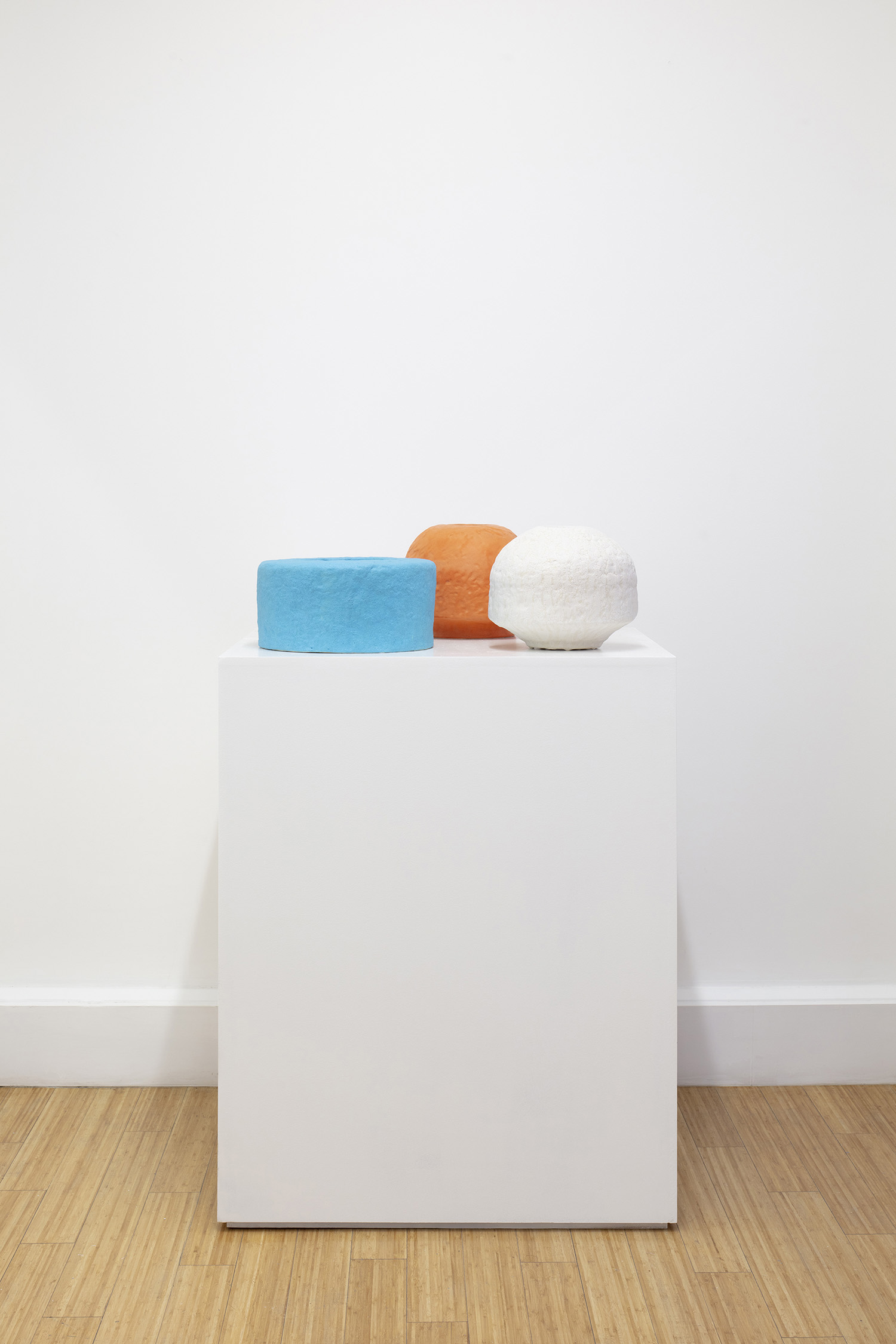
Installation view
This is the Living Vessel: Body, 2022
Photograph by WhiteBalanceMX
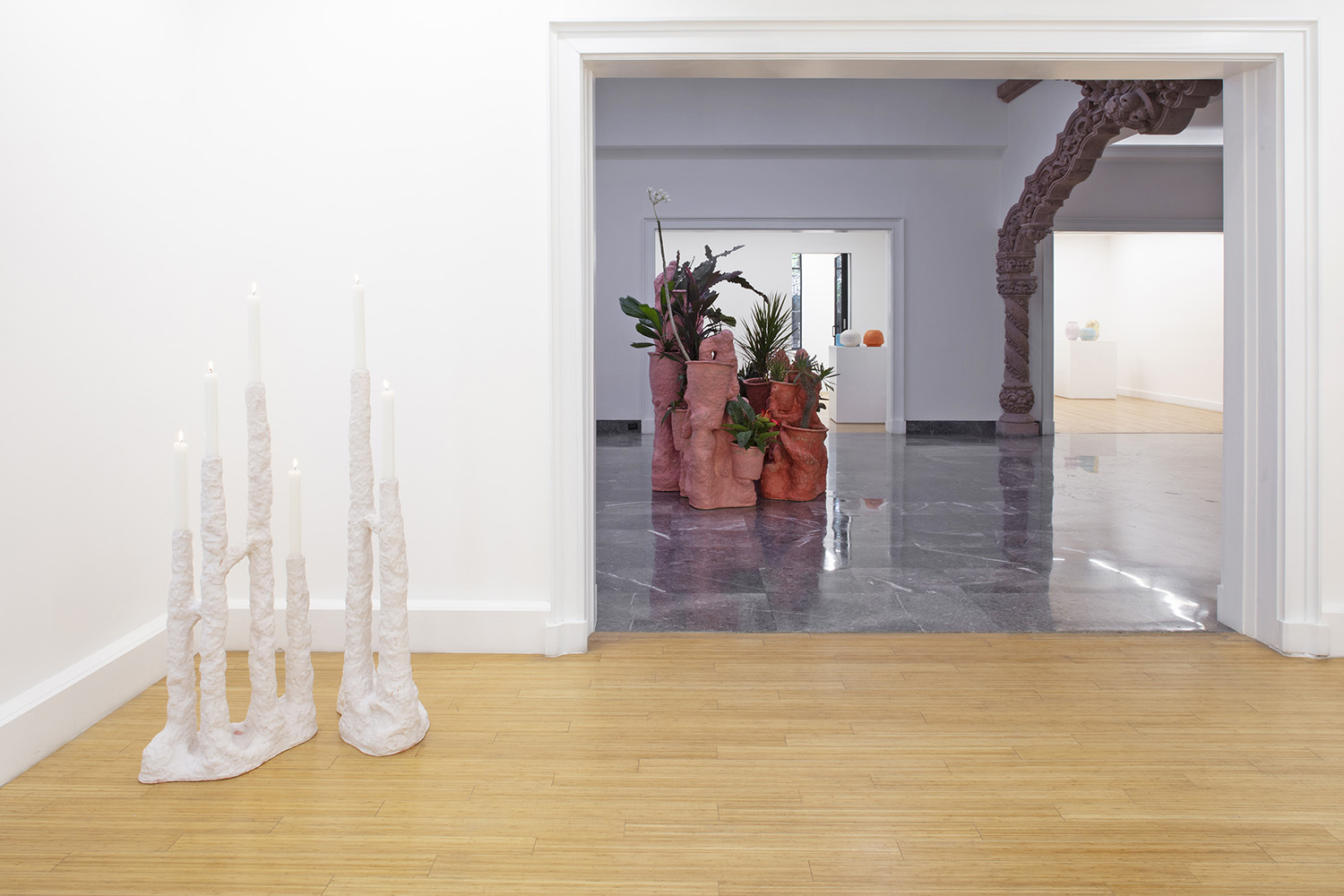
Installation view
This is the Living Vessel: Body, 2022
Photograph by WhiteBalanceMX
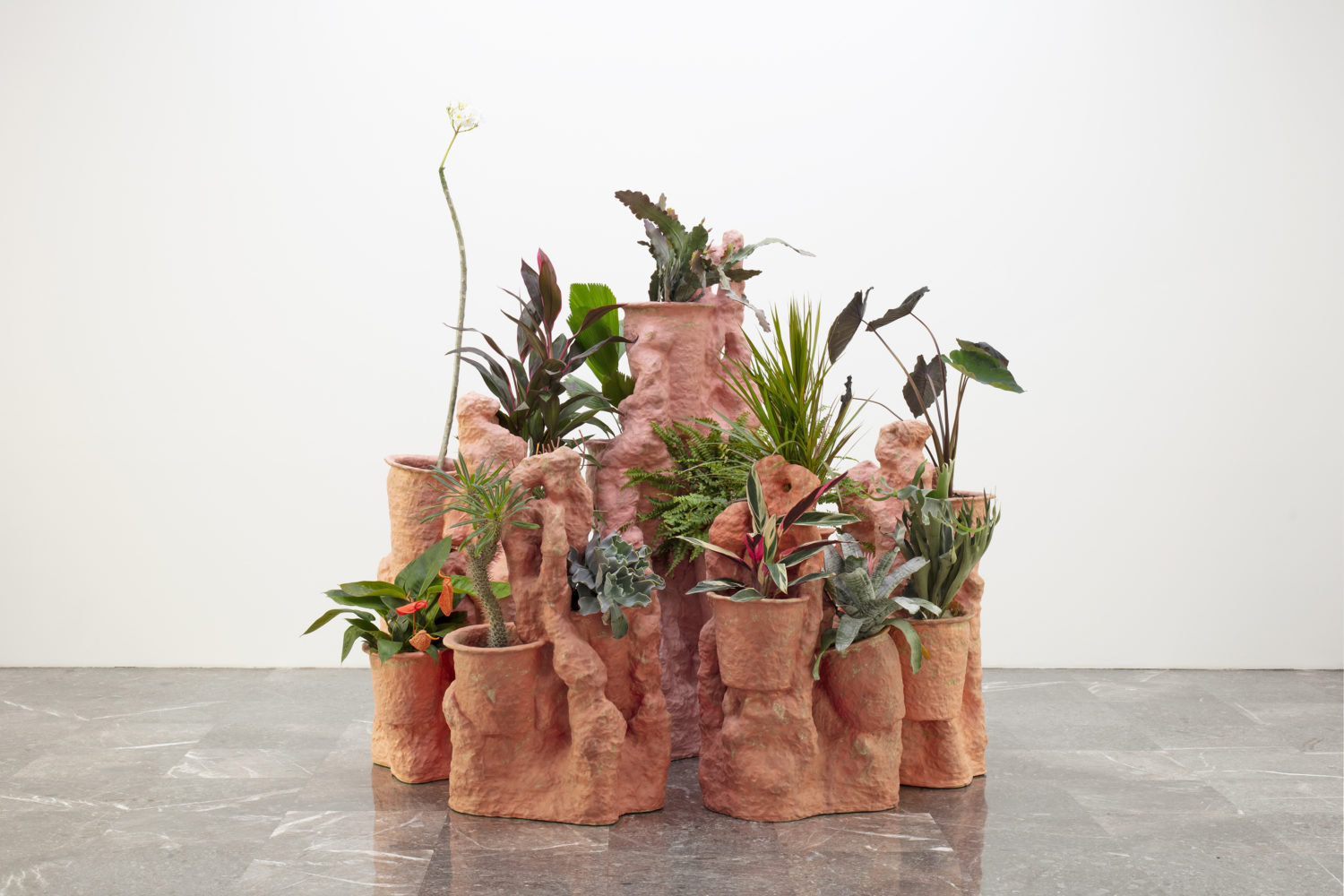
Installation view
This is the Living Vessel: Body, 2022
Photograph by WhiteBalanceMX
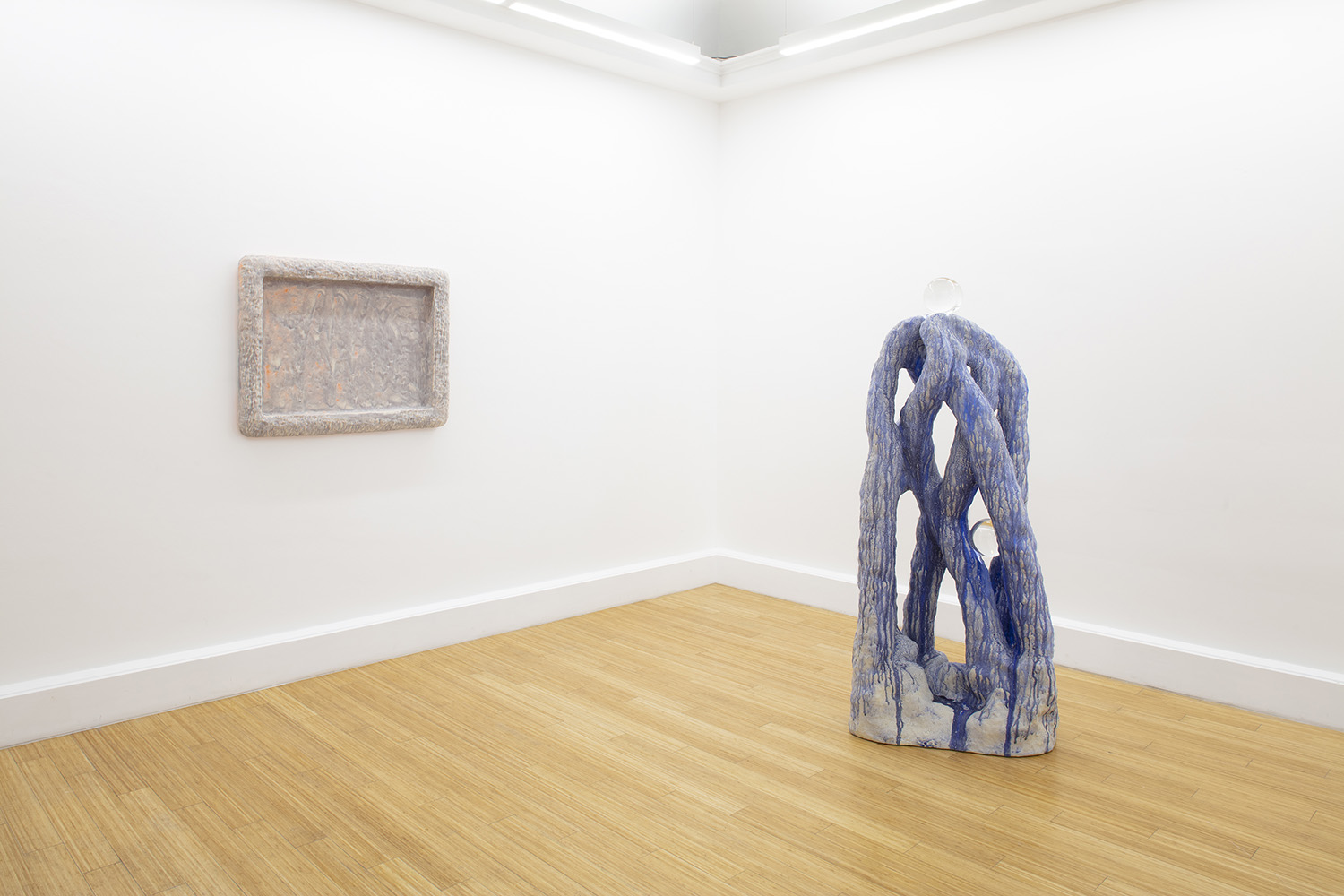
Installation view
This is the Living Vessel: Body, 2022
Photograph by WhiteBalanceMX

Installation view
This is the Living Vessel: Body, 2022
Photograph by WhiteBalanceMX
Artworks

Anders Ruhwald
Yesterday’s Dream (The Future), 2022
Glazed ceramic and crystal balls
63 x 29 x 17.5 inches
(160 x 73.7 x 44.5 cm)
Photograph by WhiteBalanceMX

Anders Ruhwald
Object for 3 plants (Petitot’s Dream, #6), 2022
Glazed ceramic
72 x 26.5 x 16 inches
(17.8 x 67.3 x 40.6 cm)
Photograph by WhiteBalanceMX

Anders Ruhwald
Object for 3 plants (Petitot’s Dream #9), 2022
Glazed ceramic
51.5 x 25.5 x 19.75 inches
(130.8 x 64.8 x 50.2 cm)
Photograph by WhiteBalanceMX

Anders Ruhwald
Object for 3 plants (Petitot’s Dream #10), 2022
Glazed ceramic
43 x 23 x 15 inches
(114.3 x 58.4 x 38.1 cm)
Photograph by WhiteBalanceMX

Anders Ruhwald
Object for 3 plants (Petitot’s Dream #7), 2022
Glazed ceramic
44.75 x 25.25 x 15 inches
(14 x 64.1 x 38.1 cm)
Photograph by WhiteBalanceMX

Anders Ruhwald
Object for 3 plants (Petitot’s Dream #8), 2022
Glazed ceramic
44 3/4 x 27 x 18 inches
(113.7 x 68.6 x 45.7 cm)
Photograph by WhiteBalanceMX

Anders Ruhwald
Holder #4, 2022
Glazed ceramic and candles
48 x 20 1/2 x 11 inches
(121.9 x 52.1 x 27.9 cm)
Photograph by WhiteBalanceMX

Anders Ruhwald
Holder #5, 2022
Glazed ceramic and candles
46 x 21.5 x 10 inches
(116.8 x 54.6 x 25.4 cm)
Photograph by WhiteBalanceMX

Anders Ruhwald
Flux Field (Aluminum, Barium, Calcium, Cadmium, Lithium, Natrium, Potassium, Selenium, Silicon, Zirconium), 2022
Glazed ceramic
30 x 39 x 2 inches
(76.2 x 99.1 x 5.1 cm)
Photograph by WhiteBalanceMX

Anders Ruhwald
Glasur Stykke #86, 2021
Glazed ceramic
10 x 9 x 9 inches
(25.4 x 22.9 x 22.9 cm)
Photograph by WhiteBalanceMX

Anders Ruhwald
Glasur Stykke #100, 2021
Glazed ceramic
9.25 x 12 x 12 inches
(23.5 x 30.5 x 30.5 cm)
Photograph by WhiteBalanceMX

Anders Ruhwald
Glasur Stykke #89, 2021
Glazed ceramic
16 x 9 x 9 inches
(40.6 x 22.9 x 22.9 cm)
Photograph by WhiteBalanceMX

Anders Ruhwald
Glasur Stykke #75, 2021
Glazed ceramic
9 x 11 x 11 inches
(22.9 x 27.9 x 27.9 cm)
Photograph by WhiteBalanceMX

Anders Ruhwald
Glasur Stykke #80, 2021
Glazed ceramic
10 x 13.5 x 13.5 inches
(25.4 x 34.3 x 34.3 cm)
Photograph by WhiteBalanceMX

Anders Ruhwald
Glasur Stykke #90, 2021
Glazed ceramic
30.5 x 22.875 x 22.875 inches
(77.4 x 58.1 x 58.1 cm)
Photograph by WhiteBalanceMX

Anders Ruhwald
Glasur Stykke #91, 2021
Glazed ceramic
12 x 10.5 x 10.5 inches
(7.6 x 26.7 x 26.7 cm)
Photograph by WhiteBalanceMX

Anders Ruhwald
Glasur Stykke #92, 2021
Glazed ceramic
9 x 10.5 x 10.5 inches
(22.9 x 26.7 x 26.7 cm)
Photograph by WhiteBalanceMX

Anders Ruhwald
Glasur Stykke #95, 2021
Glazed ceramic
13 x 10 x 10 inches
(33 x 25.4 x 25.4 cm)
Photograph by WhiteBalanceMX

Anders Ruhwald
Glasur Stykke #105, 2022
Glazed ceramic
15.5 x 10 x 7 inches
(39.4 x 25.4 x 17.8 cm)
Photograph by WhiteBalanceMX

Anders Ruhwald
Glasur Stykke #88, 2021
Glazed ceramic
9.25 x 11.25 x 11.25 inches
(23.5 x 28.6 x 28.6 cm)
Photograph by WhiteBalanceMX
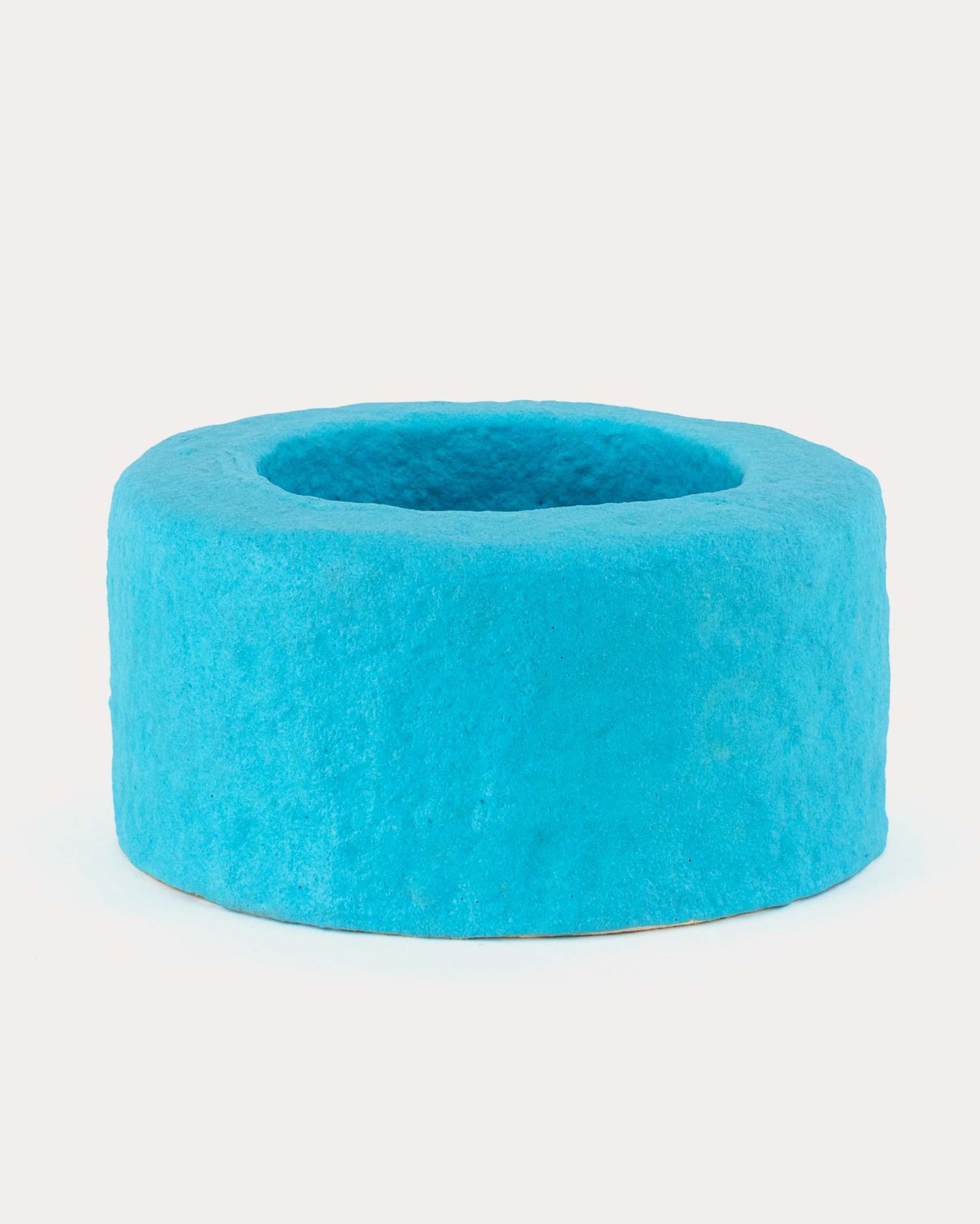
Anders Ruhwald
Glasur Stykke #73, 2021
Glazed ceramic
6.5 x 13 x 13 inches
(16.5 x 33 x 33 cm)
Photograph by WhiteBalanceMX

